МОДЕЛИРОВАНИЕ ХЛЕБОБУЛОЧНЫХ ИЗДЕЛИЙ С ПРИМЕНЕНИЕМ СЕМЯН ЧИА
МОДЕЛИРОВАНИЕ ХЛЕБОБУЛОЧНЫХ ИЗДЕЛИЙ С ПРИМЕНЕНИЕМ СЕМЯН ЧИА
Научная статья
Новикова Ж.В.1, *, Лавринович Д.С.2, Сергеева С.М.3
1 ORCID 0000-0001-8652-4777;
2 ORCID 0000-0002-6606-6032;
3 ORCID 0000-0003-3873-6139;
1, 3 Московский государственный университет пищевых производств, Москва, Россия;
2 Национальный исследовательский технологический университет «МИСиС», Москва, Россия
* Корреспондирующий автор (novikova[at]mgupp.ru)
АннотацияВ статье рассмотрена проблема расширения ассортимента хлебобулочных изделий, обеспечивающих профилактику неинфекционных болезней. Хлебобулочные изделия являются продуктами регулярного потребления в рационе питания населения России. Семена чиа, применяемые в качестве растительного компонента в хлебобулочных изделиях, являются источником биологически активных веществ: растительного белка, клетчатки, Омега-3 и Омега-6 полиненасыщенных жирных кислот, магния, кальция, фосфора. Исследования проведены в области проектирования рецептурных составов и технологий новых видов хлебобулочных изделий. Создание рецептур новых хлебобулочных изделий основывается на изучении закономерностей показателей качества готовых изделий в зависимости от количества внесенного нового сырьевого компонента. Определено влияние семян чиа на органолептические и физико-химические показатели хлебобулочного изделия булочки сдобной (бриошь) при хранении. Анализ химического состава хлебобулочного изделия булочки сдобной (бриошь) позволил сделать вывод, что изделия, вырабатываемые с применением семян чиа обладают высокой пищевой ценностью.
Ключевые слова: хлебобулочные изделия, булочка сдобная, бриошь, семена чиа.
MODELLING OF BREAD AND FLOUR PRODUCT RECIPES WITH THE USE OF CHIA SEEDS
Research article
Novikova Zh.V.1, *, Lavrinovich D.S.2, Sergeeva S.M.3
1 ORCID 0000-0001-8652-4777;
2 ORCID 0000-0002-6606-6032;
3 ORCID 0000-0003-3873-6139;
1, 3 Moscow State University of Food Production, Moscow, Russia;
2 National University of Science and Technology "MISIS", Moscow, Russia
* Corresponding author (novikova[at]mgupp.ru)
AbstractThe article explores the problem of expanding the range of bread and flour products that provide prevention of non-infectious diseases. Bread and flour products are products of regular consumption in the diet of the population of Russia. Chia seeds, which are used as a vegetable component in bread and flour products, contain biologically active substances, such as vegetable protein, dietary fibre, polyunsaturated omega-3 and omega-6 fatty acids, magnesium, calcium and phosphorus. Research in recipe composition and bread and flour product design has been carried out. The development of recipes for new bread and flour products is based on studying the regularities of the finished product quality indicators, depending on the quantity of the new raw material added. The impact of chia seeds on the organoleptic and physical-chemical indicators of the sweet bun (brioche) during storage has been determined. The analysis of the chemical composition of the sweet bun (brioche) has led to the conclusion that the goods produced with chia seeds possess a high nutritional value.
Keywords: baked goods, sweet bun, Brioche, Chia seeds.
Introduction
The diet of each person is an important component of maintaining the health of the population. The lifestyle of modern man has an impact on the development of pathological eating habits, such as having excessively high-calorie dinners, consuming foods high in salt, sugar, fat content, taking long breaks between meals. The inhabitants of megacities fail to receive minor components of food throughout the year, which in turn increases the risk of developing alimentary-dependent metabolic disorders and diseases. An integrated approach to solving the problem of disease prevention is provided by designing recipes and technologies of products enriched with vitamins, dietary fiber and biologically active additives. Satisfying consumer demand for affordable high-quality products is becoming an urgent task.
The issue of nutrition correction is relevant for the Russian Federation. Government policy in the framework of the implementation of the "Action Plan of the Federal Service for Supervision of Consumer Rights Protection and Human Wellbeing for the Period up to 2024" and " the Strategy for improving the quality of food products in the Russian Federation until 2030 " focused on providing nutritious food, preventing diseases, increasing the life expectancy and improving the quality of life of the population, stimulating the development of production and circulation of food products of appropriate quality on the market [3], [4].
Healthy diet is becoming a trend in modern society, which indicates the readiness of people to use healthy products in their diet. Companies in the catering industry are responding to consumer demands by expanding their range of familiar dishes. For example, there are a great number of varieties of burgers - from the classic, using traditional raw materials, to the original with the addition of various specific ingredients today. One of the main ingredients of the Burger is a bun, it takes around 40% of the mass of the ready-to-eat meals.
Considering the historically high share of the grain group in the consumer basket of the Russian population, researches in the development of recipe compositions and technologies for new types of bread and flour products in particular with the use of non-traditional plant raw materials, rich in useful substances necessary for the human body are becoming important. Famous scientists such as L. Ya. Auerman, T. G. Bogatyreva, A. A. Kochetkova, N. V. Labutina, L. I. Puchkova, R. D. Polandova, T. B. Tsyganova and others were developing and improving bread and flour products for a healthy diet [1], [6].
An analysis of their work and their own researches has shown that one of the most promising raw materials is Chia seeds, which have a positive effect on the structural and mechanical properties of half-finished products and finished products [2].
Chia seeds contain biologically active substances and are used as a vegetable component in flour products. Chia seeds allow you to obtain a product that has not only high organoleptic properties, but also enriched with essential substances [9].
It is clear, that the development of recipes for baked goods using chia seeds is of great theoretical and practical interest and creates the conditions for expanding the range of special foods with high quality, nutritional and biological value.
The aim of this research was to demonstrate the use of vegetable raw materials in the manufacture of baked goods.
Methods
To conduct laboratory research mathematical modelling of the sweet bun (brioche) recipe was carried out using the simplex method and MS Excel software. The optimization parameter was the content of macronutrients, fiber, omega-3 and omega-6 fatty acids. As a result of the mathematical modeling, 4 variants of the ratios of the variable components which correspond to the specified conditions were obtained (Table 1).
Table 1 – Brioche sample recipes
| Raw materials | Raw material consumption per 100 kg of flour, kg | ||||
| Sample 1 | Sample 2 | Sample 3 | Sample 4 | Sample 5 | |
| fancy white wheat flour | 100 | 95 | 90 | 85 | 80 |
| chia seeds | - | 5 | 10 | 15 | 20 |
| butter | 24 | 24 | 24 | 24 | 24 |
| hen's egg | 22 | 22 | 22 | 22 | 22 |
| first sugar | 17 | 17 | 17 | 17 | 17 |
| pressed yeast | 1,7 | 1,7 | 1,7 | 1,7 | 1,7 |
| edible salt | 0,75 | 0,75 | 0,75 | 0,75 | 0,75 |
Note: Sample 1 – control sample of the sweet bun (brioche); Sample 2 – 5% wheat flour replaced by chia seeds (TU 9761-005-11602363-2016); Sample 3 – 10% wheat flour replaced by chia seeds; Sample 4 – 15% wheat flour replaced by chia seeds; Sample 5 – 20% wheat flour replaced by chia seeds
Given the fact that chia seeds can affect the structure and properties of both the dough and the finished product, 90–95°C water was poured over them 10 minutes in advance.
The dough was mixed in a kneading machine at a medium speed for 10–15 minutes until the desired development of gluten was achieved. Then the prepared chia seeds were introduced into the dough at a slow speed. The dough was made using the technology of long-term cold fermentation for 8 hours at a temperature of 4 ± 2 °C.
When introducing chia seeds in the amount of 5% and 10%, no significant effect on the structural and mechanical properties of the dough was observed. Introducing chia seeds in the amount of 15% and 20% made the dough firmer and less stretchy.
The dough was then cut, shaped and left to rise for 60-90 minutes at a temperature of 18 ± 2 ° C. The products were baked in the baker’s rack at a temperature of 190 to 200 ° C for 12 to 15 minutes.
To determine the effect of chia seeds on the storage of products during the guaranteed shelf life, the study samples were placed for storage. Freshness was assessed 3, 8, 16, 24 hours after baking. The quality of the control and study samples was assessed according to the regulated quality indicators (GOST 24557-89): mass fraction of moisture, porosity and acidity. The degree of the crumb staleness was determined according to the method of 5C on the device (indenter "cylinder 36"), a piece of crumb with a weight of 5 ± 0.2 g was taken for the examination.
The swelling of the crumb (ml 1 g dry matter) was determined by the amount of water which was absorbed by the crumb after 5 minutes.
Crum friability was determined by the particles of crumbs formed as a percentage when the crumb sample was shaken (15 minutes at a speed of 190 to 250 rpm).
The analysis of the food and energy value of products was carried out using the calculation method [7].
Results and discussion
The development of recipes for new bread and flour products is based on the regularity of the quality indicators for finished products, depending on the quantity of the unconventional raw material added. The organoleptic estimation of the study samples enables us to draw conclusions about the influence of the ingredients introduced on the appearance, the color of the crust and the condition of the crumb of the product. However, the additives have no visible influence on changes in the taste and smell of baked products. As a result of the tasting analysis, the highest total score for Sample No. 3 was obtained, which was characterized by a required shape, a light brown crust color interspersed with chia seeds, as well as a crumb clarity, a sweet taste and a characteristic aroma for a rolls and buns.
The effect of chia seeds on the quality of the products during storage was monitored by changes in the organoleptic and physicochemical parameters (mass fraction of moisture, swelling, crumb friability, acidity and porosity). The results are shown in Figure 1-5.
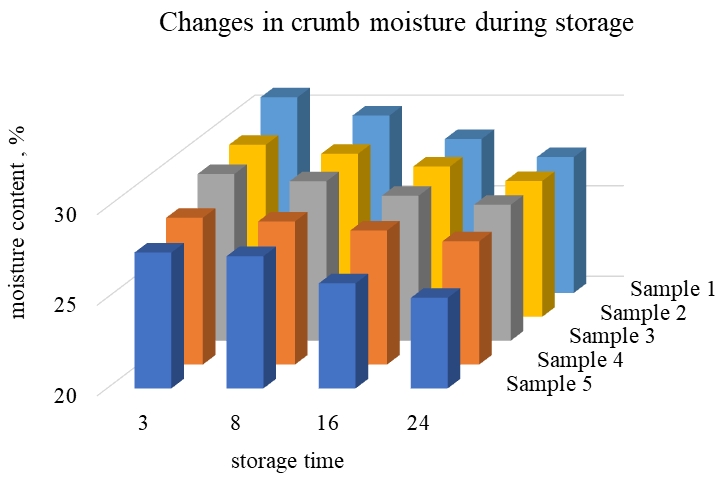
Fig. 1 – The influence of the addition of chia seeds on the physico-chemical parameters in the storage of buns (brioches)
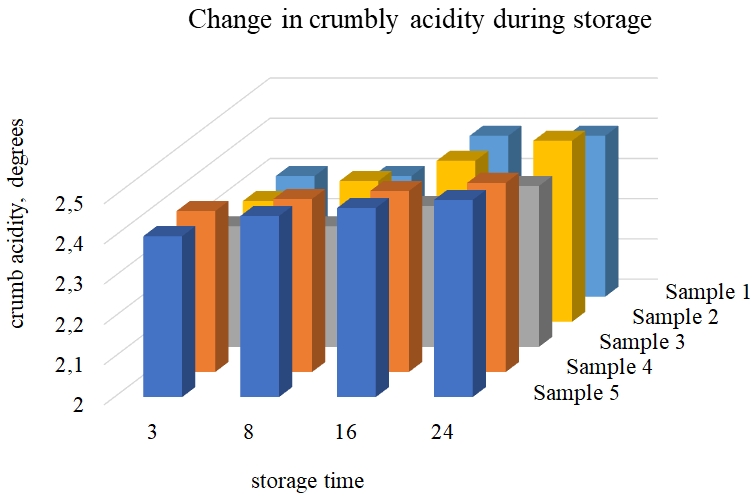
Fig. 2 – The influence of the addition of chia seeds on the physico-chemical parameters in the storage of buns (brioches)
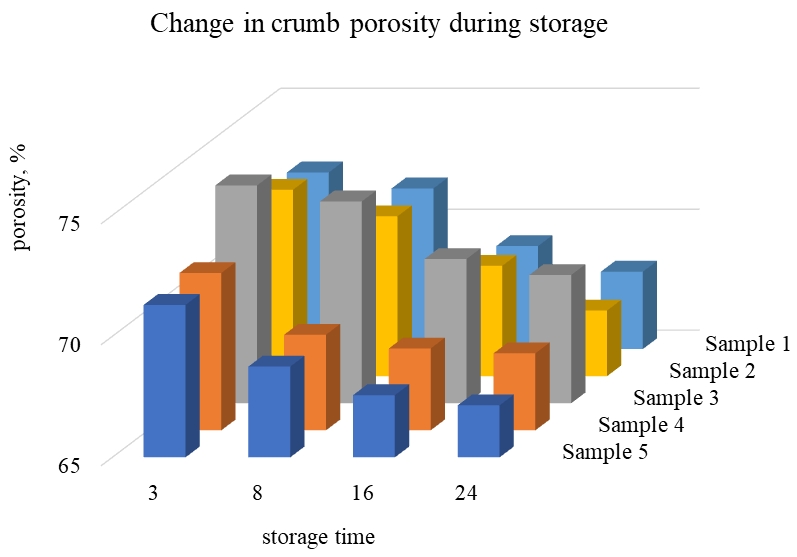
Fig. 3 – The influence of the addition of chia seeds on the physico-chemical parameters in the storage of buns (brioches)
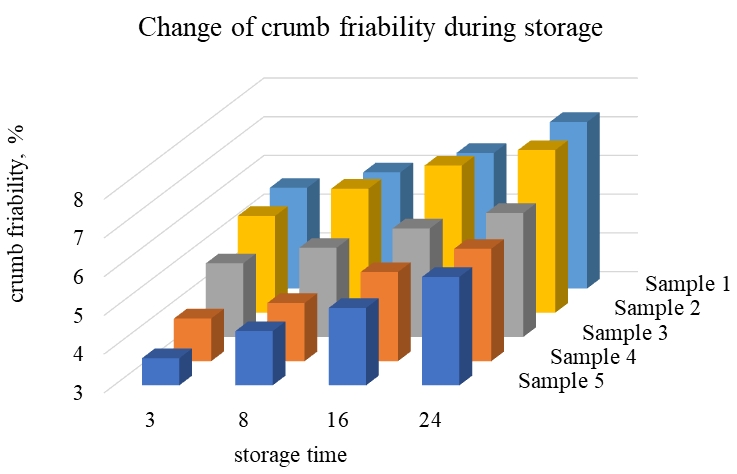
Fig. 4 – The influence of the addition of chia seeds on the physico-chemical parameters in the storage of buns (brioches)
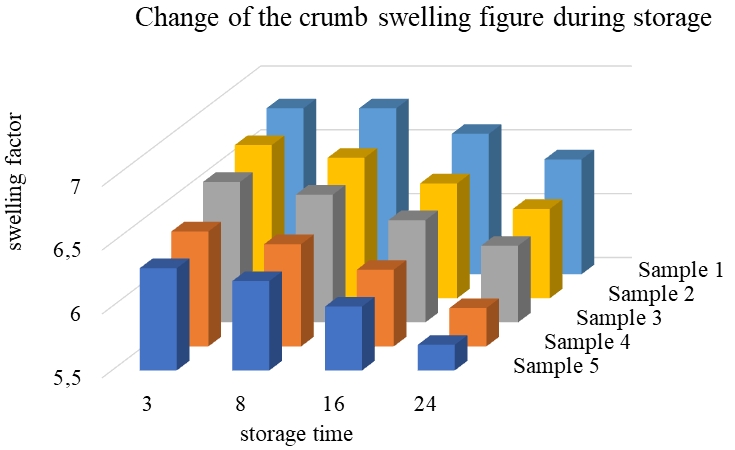
Fig. 5 – The influence of the addition of chia seeds on the physico-chemical parameters in the storage of buns (brioches)
After 8 hours of storage, no significant changes in the organoleptic properties were found in all study samples. After 16 hours, the samples showed a decrease in crumb elasticity and an increase in crumb friability, to a lesser extent the changes in sample 3 were expressed. After 24 hours of storage, all samples became stiffer and the crumb less elastic. When using chia seeds in an amount of 10% by weight of the flour in the product, however, a decrease in the characteristics such as taste, smell, crumb elasticity and friability were less noticeable. Even though all study samples are of better quality compared to the control sample in terms of organoleptic and physicochemical indicators, sample 3 shows higher indicators during the storage, affects the product's consumer properties. The chemical composition of the control and study sample 3 (Table 2) were analyzed [5], [7], [8].
Table 2 – Comparative properties of the basic nutrient content and the energy value of finished products per 65 grams
| Nutrient materials | Study sample 1 | Study sample 3 | ||
| contents in 1 serving | daily requirement, % | contents in 1 serving | daily requirement, % | |
| Proteins, g. | 5,8 | 7,7 | 6,1 | 8,1 |
| Fats, g | 7,8 | 9,4 | 9,1 | 11 |
| Carbohydrates, g. | 35,1 | 9,6 | 34,1 | 9,3 |
| Dietary fibers, g. | 1,5 | 5,0 | 3,0 | 10,0 |
| Omega-3 polyunsaturated fatty acid, g. | 0,04 | 3,8 | 0,9 | 87,9 |
| Omega-6 polyunsaturated fatty acid, g. | 0,5 | 12,9 | 0,8 | 19,2 |
| Nutrition value, kcal | 230,9 | 9,2 | 236,8 | 9,5 |
It is known that chia seeds are characterized by a high content of proteins, polyunsaturated fatty acids and dietary fiber, which determines the high nutritional value of products produced when they are used. Dietary fiber is classified as an essential micronutrient that fulfills important physiological functions in the human body. The fiber content in the study sample is twice that of the control sample and covers 10 % of the daily requirement. Thus, the high content of polyunsaturated omega-3 and omega-6 fatty acids in chia seeds, which are required to support cognitive abilities, heart and vascular function, the daily needs by 87.9 % and 19.2 % cover.
Conclusions
The use of chia seeds in bread and flour product recipes not only offers prospects for expanding the range and taste diversity of the dietary habits of the population, but also provides the products with a functional orientation and suitability for people who adhere to a healthy lifestyle.
| Конфликт интересов Не указан. | Conflict of Interest None declared. |
Список литературы / References
- Губенко, Г. Ю. Перспективы комплексного использования регионального нетрадиционного растительного сырья при производстве пищевых продуктов / Г. Ю. Губенко, Л. А. Маюрникова, Л. П. Рубчевская // Пищевая промышленность. – 2016. – № 4. – С. 23–27.
- Новикова, Ж. В. Разработка булочных изделий для здорового питания с применением растительного сырья / Ж. В. Новикова, С. М. Сергеева, Е. В. Муханов // Вестник Воронежского государственного университета инженерных технологий. – 2020. – Т. 82. – № 4(86). – С. 188-195. – DOI20914/2310-1202-2020-4-188-195.
- План деятельности Федеральной службы по надзору в сфере защиты прав потребителей и благополучия человека на период до 2024 года (утв. Роспотребнадзором 01.02.2019). // КонсультантПлюс : [Электронный ресурс]. – URL: http://www.consultant.ru/document/cons_doc_LAW_332104/ (дата обращения: 18.06.2020).
- Распоряжение Правительства РФ от 29.06.2016 N1364-р «Об утверждении Стратегии повышения качества пищевой продукции в Российской Федерации до 2030 года». // КонсультантПлюс : [Электронный ресурс]. – URL: http://www.consultant.ru/document/cons_doc_LAW_200636/ (дата обращения: 18.06.2020).
- Семена чиа — USDA.GOV : [Электронный ресурс]. — URL: https://clck.ru/Wga4n (дата обращения: 18.06.2020).
- Современные подходы к разработке рецептур безглютеновых хлебобулочных изделий / Л.В. Зайцева [и др.]. // Вопросы питания. – 2020. – № 1. – С. 77-85.
- ТР ТС 022/2011. Технический регламент Таможенного союза. Пищевая продукция в части ее маркировки. // КонсультантПлюс : [Электронный ресурс]. – URL: http://www.consultant.ru/document/cons_doc_LAW_124614/ (дата обращения: 18.06.2020).
- Тутельян, В. А. Химический состав и калорийность российских продуктов питания / В. А. Тутельян. — Москва : ДеЛи плюс, 2012. — 284 c. — Текст : непосредственный.
- Bechthold, A. Chiasamen - Präkolumbisches Grundlebensmittel und modernes Novel Food / A. Bechthold // Ern'a'hrungs umschau. – 2015. – № 3. – С. 9-12.
Список литературы на английском языке / References in English
- Gubenko, G. Yu. Perspektivy kompleksnogo ispol'zovanija regional'nogo netradicionnogo rastitel'nogo syr'ja pri proizvodstve pishhevyh produktov [Prospects for the integrated use of regional non-traditional plant raw materials in food production] / G. Yu. Gubenko, L.A. Mayurnikova, L.P. Rubchevskaya // Pishhevaja promyshlennost' [Food industry] . - 2016. - No. 4. - P. 23–27. [in Russian]
- Novikova, Zh. V. Razrabotka bulochnyh izdelij dlja zdorovogo pitanija s primeneniem rastitel'nogo syr'ja [Development of bakery products for a healthy diet using plant materials] / Zh. V. Novikova, S. M. Sergeeva, E. V. Muhanov // Vestnik Voronezhskogo gosudarstvennogo universiteta inzhenernyh tehnologij [Voronezh State University of Engineering Technologies Bulletin] – 2020. – Vol. 82. – No 4(86). – P. 188-195. – DOI 10.20914/2310-1202-2020-4-188-195. [in Russian]
- Plan dejatel'nosti Federal'noj sluzhby po nadzoru v sfere zashhity prav potrebitelej i blagopoluchija cheloveka na period do 2024 goda (utv. Rospotrebnadzorom 01.02.2019) [The plan of activities of the Federal Service for Supervision of Consumer Rights Protection and Human Welfare for the period up to 2024] (approved by Rospotrebnadzor on 02/01/2019). - // ConsultantPlus: [Electronic resource]. - URL: http://www.consultant.ru/document/cons_doc_LAW_332104/ (accessed: 18.06.2020). [in Russian]
- Rasporjazhenie Pravitel'stva RF ot 29.06.2016 N1364-r «Ob utverzhdenii Strategii povyshenija kachestva pishhevoj produkcii v Rossijskoj Federacii do 2030 goda» [Order of the Government of the Russian Federation of June 29, 2016 N1364-r "On approval of the Strategy for improving the quality of food products in the Russian Federation until 2030"]. // ConsultantPlus: [Electronic resource]. - URL: http://www.consultant.ru/document/cons_doc_L AW_200636/ (accessed: 18.06.2020). [in Russian]
- Semena chia [Chia seeds ]// USDA.GOV: [Electronic resource]. - URL: https://clck.ru/Wga4n (accessed: 18.06.2020). [in Russian]
- Sovremennye podhody k razrabotke receptur bezgljutenovyh hlebobulochnyh izdelij [Modern approaches to the development of recipes for gluten-free bakery products] / L.V. Zaitsev et al. // Voprosy pitanija [Nutritional issues] - 2020. - No. 1. - P. 77-85. [in Russian]
- TR TS 022/2011. Tehnicheskij reglament Tamozhennogo sojuza. Pishhevaja produkcija v chasti ee markirovki [TR CU 022/2011. Technical regulations of the Customs Union. Food products in terms of their labeling] // ConsultantPlus: [Electronic resource]. - URL: http://www.consultant.ru/document/cons_doc_LAW _124614/ (accessed: 18.06.2020). [in Russian]
- Tutelyan, V. A. Himicheskij sostav i kalorijnost' rossijskih produktov pitanija [Chemical composition and caloric content of Russian food products] / V. A. Tutelyan. - Moscow: DeLi plus, 2012 . – P 284. [in Russian]
- Bechthold, A. Chiasamen Präkolumbisches Grundlebensmittel und modernes Novel Food [Pre-Columbian basic food and modern novel food] / A. Bechthold // Ernährungsumschau [Change of diet]. – 2015. – № 3. – P. 9-12. [in German]
